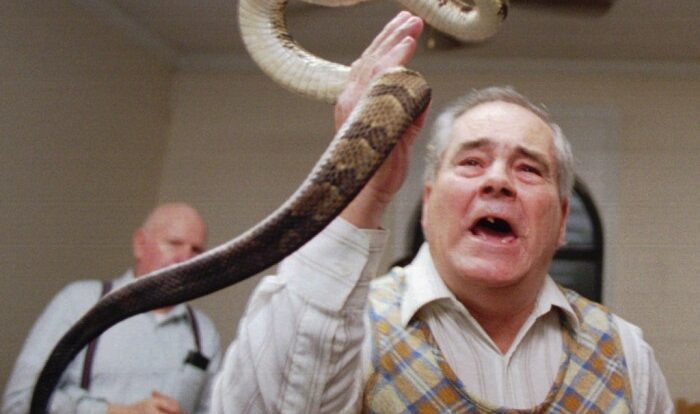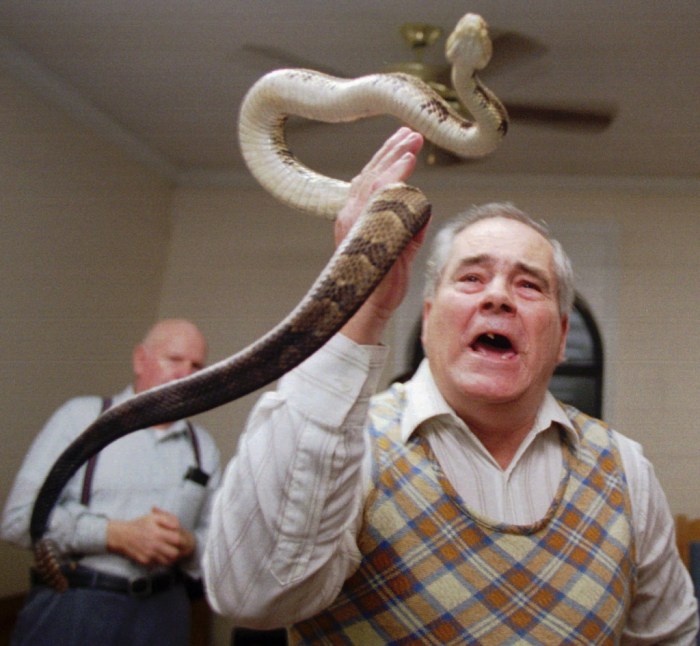
Embark on a journey into the fascinating world of snake and cat companionship, as we delve into the intricate dynamics of “How to Handle His Snake Yumi Sin and Fit Kitty.” Navigating this unique bond requires a delicate balance of understanding, preparation, and careful interactions.
Join us as we explore the nuances of this unlikely alliance, ensuring the well-being and harmony of both the snake and the feline.
From deciphering their natural instincts to creating a safe environment, we’ll provide a comprehensive guide to foster a respectful and enriching coexistence. Discover the secrets to handling both species with confidence, supervise their interactions effectively, and address their unique dietary and health considerations.
By the end of this exploration, you’ll be equipped with the knowledge and strategies to create a thriving and harmonious environment for your snake Yumi Sin and your beloved kitty.
Understanding Snake and Cat Behavior

Snakes and cats are fascinating creatures with unique behaviors and instincts. When considering keeping them together, it’s crucial to understand their natural tendencies and the potential challenges involved.
Natural Instincts and Behaviors
Snakes are predators with keen senses and a strong instinct to hunt and constrict prey. They rely on their sense of smell and heat detection to locate and capture food. Cats, on the other hand, are curious and playful animals with a strong prey drive.
They may see snakes as potential playmates or prey, which can lead to conflict.
Preparing the Environment

Creating a safe and suitable habitat for both the snake and the cat is crucial for their well-being. This involves providing appropriate enclosures, maintaining optimal temperature and humidity levels, and offering enrichment activities to stimulate their natural behaviors.
Enclosure Design
The enclosure for the snake and cat should be designed to meet the specific needs of each species. For the snake, a secure and escape-proof enclosure is essential. It should be large enough to allow for movement and exploration, and it should have hiding places and a secure area for shedding.
For the cat, a multi-level enclosure with scratching posts, toys, and a litter box is ideal.
Temperature Regulation
Snakes are ectothermic, meaning they rely on external sources to regulate their body temperature. Providing a temperature gradient within the enclosure is crucial for their health. The warm end of the enclosure should be around 85-90°F (29-32°C), while the cool end should be around 75-80°F (24-27°C).
Cats, on the other hand, prefer a more consistent temperature range of around 65-75°F (18-24°C).
Enrichment Activities
Providing enrichment activities is essential for both the snake and the cat’s mental and physical well-being. For the snake, hiding places, climbing structures, and a water bowl for soaking are all important. For the cat, scratching posts, toys, and interactive play sessions can help prevent boredom and destructive behaviors.
Handling and Interactions: How To Handle His Snake Yumi Sin And Fit Kitty
Proper handling and interactions between snakes and cats are crucial for the safety and well-being of both animals. Understanding the unique behaviors of each species is essential to establish safe and respectful interactions.
When handling the snake, always support its body securely, avoiding any sudden movements. Handle it gently, allowing it to move freely within your grip. Never grab the snake by the tail or head, as this can cause injury or stress.
Similarly, when handling the cat, approach it calmly and avoid startling it. Respect its personal space and allow it to come to you.
Learning to handle his snake Yumi Sin and fit kitty is a challenge, but it’s nothing compared to the task of increasing insurance agent productivity. If you’re struggling to motivate your team, check out this guide how to increase insurance agent productivity . It’s packed with tips on setting goals, providing feedback, and creating a positive work environment.
With the right approach, you can help your agents reach their full potential and boost your bottom line. Back to our furry friends, Yumi Sin is getting along well with kitty, but I still need to work on their leash training.
Supervised Interactions
Supervised interactions between the snake and cat should be conducted with extreme caution. Always ensure a neutral environment where both animals feel comfortable and secure. Start with short, controlled interactions, gradually increasing the duration as they become more accustomed to each other.
Monitor their behavior closely, intervening immediately if any signs of aggression or discomfort arise.
Feeding and Nutrition

Maintaining the health and well-being of your snake and cat requires a comprehensive understanding of their dietary needs. This guide provides detailed information on feeding both species, ensuring they receive the proper nutrients for optimal growth and development.
Snake Feeding
Snakes are carnivorous reptiles, requiring a diet consisting primarily of live or frozen prey. The specific type of prey depends on the snake’s size and species.
You can learn how to handle his snake yumi sin and fit kitty, and also how to increase insurance agent productivity. How to increase insurance agent productivity . You can learn how to handle his snake yumi sin and fit kitty, and also how to increase insurance agent productivity.
- Prey Size:Prey should be approximately the same size as the snake’s head.
- Feeding Frequency:Adult snakes typically feed every 1-2 weeks, while younger snakes may need to feed more frequently.
- Live vs. Frozen Prey:Both live and frozen prey can be offered, but frozen prey is often safer and more convenient.
Cat Feeding
Cats are obligate carnivores, meaning their diet must consist primarily of meat. Commercial cat food is a convenient and balanced option, but it’s important to choose high-quality brands that meet the nutritional needs of your cat.
- Portion Size:Determine the appropriate portion size based on your cat’s age, weight, and activity level.
- Feeding Frequency:Adult cats typically eat 2-3 meals per day, while kittens may need to eat more frequently.
- Wet vs. Dry Food:Both wet and dry food can be offered, but wet food is often more palatable and provides additional hydration.
Dietary Supplements
In some cases, dietary supplements may be necessary to ensure your snake or cat receives all the nutrients they need. Consult with a veterinarian to determine if any supplements are required for your specific pet.
Once you know how to handle his snake yumi sin and fit kitty, you are good to go. But there are some more useful tips you can learn. You can try to increase your insurance agent productivity to get more out of your time.
For example, try following this to improve your productivity. And this can also help you with handling his snake yumi sin and fit kitty.
Health and Safety Considerations

Maintaining the well-being of both the snake and the cat is crucial. This section delves into common health issues, potential hazards, preventative measures, symptoms to watch for, and emergency protocols to ensure their safety and health.
Snakes and cats can suffer from various health issues. Snakes may experience respiratory infections, skin problems, and digestive issues. Cats are prone to upper respiratory infections, urinary tract infections, and skin conditions. Regular veterinary checkups are essential for early detection and treatment of any health concerns.
Potential Hazards
- Bites:Snake bites can be venomous and require immediate medical attention. Cats may bite if they feel threatened.
- Ingestion:Snakes can ingest foreign objects, while cats may ingest snake venom or small prey.
- Escape:Snakes are skilled escape artists. Ensuring secure enclosures is crucial.
- Allergies:Some individuals may be allergic to snake venom or cat dander.
- Stress:Improper handling or environmental factors can stress both snakes and cats.
Preventative Measures, How to handle his snake yumi sin and fit kitty
To minimize health risks, implement the following measures:
- Provide appropriate housing and a healthy diet.
- Handle animals gently and with respect.
- Supervise interactions between the snake and the cat.
- Keep enclosures clean and free of hazards.
- Regularly monitor animals for any signs of illness or distress.
Symptoms to Watch For
Early detection of health issues is vital. Watch for the following symptoms in both snakes and cats:
- Snakes:Lethargy, loss of appetite, respiratory distress, skin discoloration.
- Cats:Sneezing, coughing, vomiting, diarrhea, lethargy, changes in behavior.
Emergency Protocols
In case of an emergency, it’s crucial to act quickly and appropriately:
- Snake bite:Immobilize the victim and seek medical attention immediately.
- Cat bite:Clean the wound and seek medical attention if necessary.
- Ingestion:Do not induce vomiting. Contact a veterinarian or poison control center.
- Escape:Secure the area and contact a herpetologist or animal control.
- Allergic reaction:Administer epinephrine if available and seek medical attention immediately.
Conclusive Thoughts
In conclusion, the delicate dance between a snake and a cat requires a deep understanding of their natural behaviors, a meticulously prepared environment, and thoughtful handling techniques. By adhering to the principles Artikeld in this guide, you can cultivate a harmonious coexistence where both animals thrive.
Remember, patience, respect, and a keen eye for their well-being are the cornerstones of success in this extraordinary companionship.
Questions and Answers
Is it safe to keep a snake and a cat together?
With proper preparation and supervision, it can be possible, but it’s crucial to understand their natural instincts and potential risks.
How do I create a safe habitat for both species?
Provide separate enclosures that meet their specific needs, ensure proper temperature regulation, and offer enrichment activities to stimulate both animals.
What are the key handling techniques for a snake and a cat?
Handle the snake securely using a snake hook, while approaching the cat calmly and respecting its boundaries. Supervise interactions closely to prevent any accidents.
How do I feed my snake and cat?
Snakes require live prey or frozen/thawed rodents, while cats need a balanced diet of high-quality cat food. Follow specific feeding schedules and portion sizes.
What are the common health issues to watch out for?
Snakes can be prone to respiratory infections and shedding problems, while cats may experience urinary tract issues or hairballs. Monitor their health closely and seek veterinary attention when necessary.




